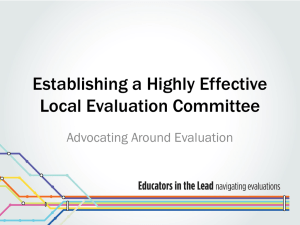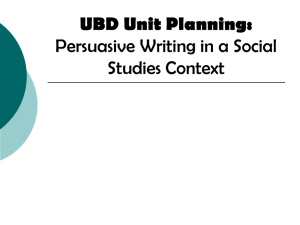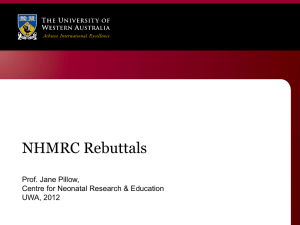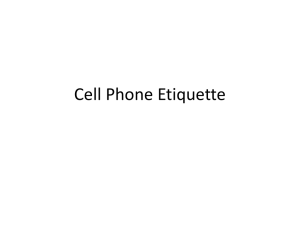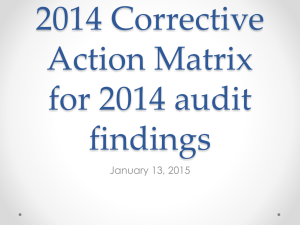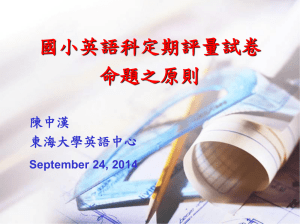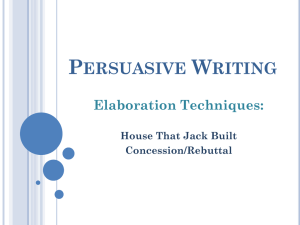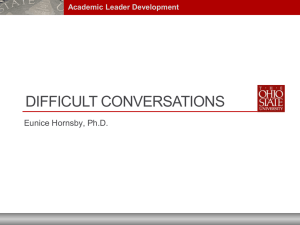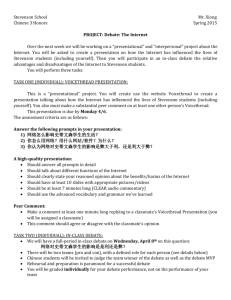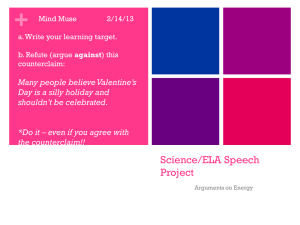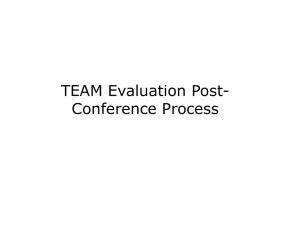Teacher evaluation in NJ: 2013
advertisement
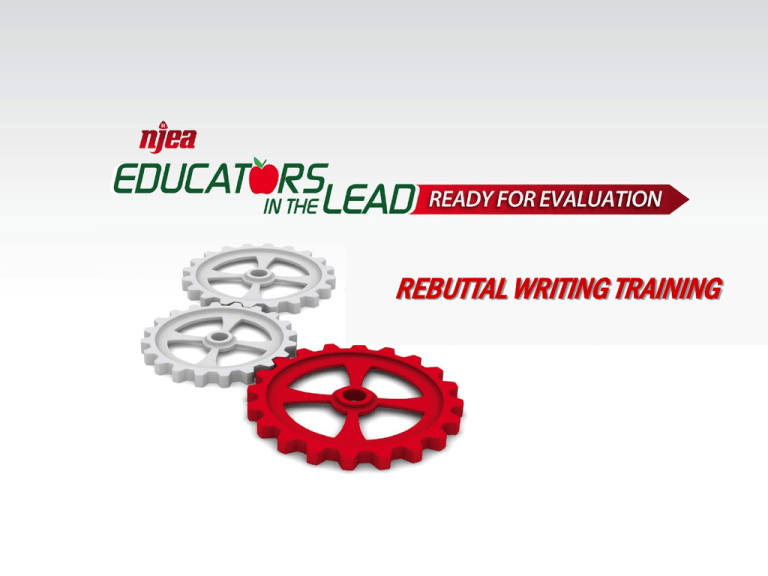
Teacher evaluation in NJ: 2013 REBUTTAL WRITING TRAINING PRESENTERS’ NAMES OBSERVATIONS • Shall be used as one form of evidence for measurement of teacher performance • Will be included in the determination of the annual summative evaluation rating • Shall be conducted by an individual – employed in the school district in a supervisory role and capacity – possessing a school administrator certificate, principal certificate, or supervisor certificate. OBSERVATION TYPES ● “Long observation” o Minimum duration of 40 minutes or one class period, whichever is shorter ● “Short observation” o At least 20 minutes OBSERVATION TYPES ● “Announced observation” – notified of the date and the class period that the observation will be conducted ● “Unannounced observation” – not notified of the date or time that the observation will be conducted. ● “Co-observation” – two or more supervisors observe simultaneously, or at alternate times, the same lesson or portion of a lesson for the purpose of training TEACHER OBSERVATIONS VARY ● Long: 40 minutes, with post-conference ● Short: 20 minutes, with post-conference Teacher Categories Years 1–2 Non-Tenured Years 3–4 Total # of Observations 3 (2 long, 1 short) 3 (1 long, 2 short) 3 (0 long, 3 short) Tenured Observers Multiple Observers Required Multiple Observers Recommended Notes: ● Corrective Action Plans: After the first year, teachers who receive an “Ineffective”or “Partially Effective” rating are required to have one additional observation. Multiple observers are required. ● Announced vs. Unannounced: Within the minimum requirements, all teachers must have at least one unannounced and one announced observation. Practice SGO SGP TEACHERS: PRACTICE Summative PRE-OBSERVATION CONFERENCE Pre-conference shall occur within seven teaching days prior to the observation, not including the day of the observation. At least one observation shall be announced and preceded by a pre-conference. Proposed-N.J.A.C. 6A:10-4.4 WHEN THE OBSERVER ENTERS Show Evidence of Good Practice • Slow down • Capture teachable moments • Provide copies of handouts to Administration WHEN THE OBSERVER ENTERS Show Evidence of Good Practice • Closure – – – – Exit Tickets Ask questions On a scale of 1-5-using your fingers-rate todays lesson As you leave today, I’ll be at the door. Please share with me one word or concept you learned today. SELF REFLECTION NJEA Resource Guide on Evaluation for Teachers Page 5-10 Page 11-18 WWW.NJEA.ORG Baseline Data Observation Log Issues & Actions Evaluations POST-OBSERVATION CONFERENCE ● A meeting, either in-person or remotely between a supervisor and the teaching staff member to discuss the data collected in the observation ● Be followed by both parties to such a conference signing the written evaluation report and each retaining a copy for his or her records ● Allow the teaching staff member to submit his or her written objection(s) / (rebuttal) o within 10 teaching-staff-member working days o shall be attached to each party's copy CRITICAL CONVERSATIONS Basic steps 1. 2. 3. 4. Identify and clarify Establish a mutual purpose Establish respect STATE your course o Share your facts: least controversial & most persuasive first o Tell your story o Ask for others facts and stories o Talk about what is fact and what is assumption o Encourage differing views 5. Actively listen CRITICAL CONVERSATIONS Preparation Make sure you and your supervisor have sufficient time to see the conversation through to the end. Be realistic about what you can and cannot achieve. Make sure the conversation is focused on facts and why the facts are important, not just opinion. CRITICAL CONVERSATIONS Preparation Practice your key sentence. Understand you have a good chance to resolve an issue rather quickly with a conversation. Take a deep breath. CRITICAL CONVERSATIONS Building rapport Be sincere. Be present in the conversation. Be confident, but not arrogant. Be empathic. Be honest. WRITING A RESPONSE Your turn to give feedback! – Acknowledge positive findings – Acknowledge challenges revealed o Ask for support – Share data – Never submit your response without showing it to your Building Rep or Association Rep WRITING A REBUTTAL Analyze Neutralize equalize Equalize analyze ANALYZE – Ask the right questions ● What is the “tone” of the written report? ● Is the report designed to lead to professional learning? ● Is the report derogatory without being constructive? ● Are there positive facts that have been omitted? ● Is there a pattern? ● What needs correction by rebuttal? NEUTRALIZE all negative items ● Provide evidence to support your disagreement ● Give data to neutralize what has been criticized ● Answer “labeled” items ● Use language that is not emotionally charged EQUALIZE the results ● Stress preparation ● Focus on objectives, procedures, attainment ● Be clear ● Connect performance to job description/model ● Discuss, don’t reject, recommendations ● Identify needed support for recommendations MAKE YOUR REBUTTAL EFFECTIVE ● Keep it short and simple ● Seek advice ● Utilize facts ● Get specifics ● Identify if assistance had been previously requested; response ● Have an appropriately trained association representative read the response before giving it to the administrator AT YOUR TABLES ● Review Observation A & B with the attached Reflections ● Discuss your thoughts with your table. – Does the reflection paint a big picture? – What changes should be made to improve it? GROUP WORK ● With a partner, pick an observation and write a reflection for it. CORRECTIVE ACTION PLAN ● Review corrective action plan with association representative ● Make sure CAP expectations are achievable ● Identify roles and responsibilities: – administration – teaching staff member ● Review timelines MID-YEAR EVALUATION ● Required if have a Corrective Action Plan ● Timing for the mid-year could vary depending if a teachers gets an SGP or not. SUMMATIVE EVALUATION ● Everyone gets an annual summative evaluation ● Can now be the same as the final evaluation.
